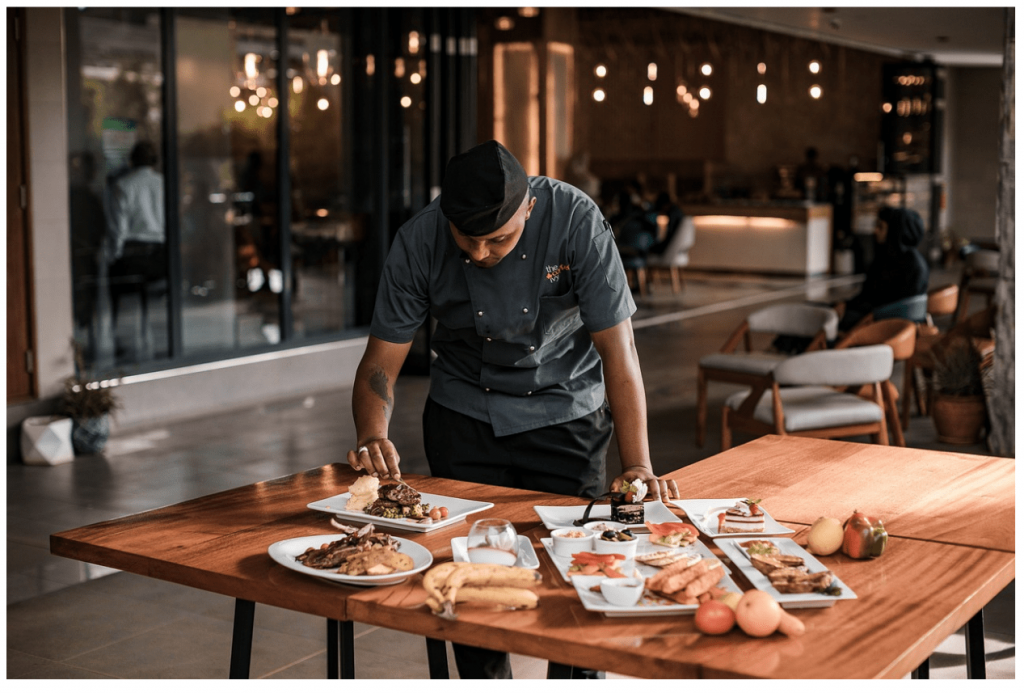New York City is home to over 8 million people, making it one of the most competitive and dynamic food scenes in the world. Within this culinary ecosystem, line cooks are the backbone, working long hours under intense pressure to ensure that every dish meets the restaurant’s standards.
But what does a typical day look like for a line cook in NYC? Before we answer that question, let’s make sure you know what a line cook is and what you need to become one.

What Is a Line Cook?
A line cook is essentially a cook who works on the line. The line is a long space in the kitchen with all the hot-side equipment needed to cook menu items: deep fryers, charbroilers, a flat-top grill, a range top, and other tools depending on the restaurant.
Each line cook has a designated area, and their tasks depend on the area they’re assigned to.
How Do I Become a Line Cook?
The requirement for line cook jobs in NYC depends on the restaurant. Usually, all you need is a certain amount of previous experience, but some restaurants ask for a culinary diploma. Additionally, being a team player is essential because the success of the entire kitchen depends on each and every cook.
Typical Day of a Line Cook
Now, let’s see what a typical day of a line cook looks like.
The Early Start: Prepping for the Day
A line cook’s day often begins in the early morning, well before the first customer walks through the door. A line cook’s shift usually starts between 7:00 and 8:00 AM. The first task is mise en place, a French culinary term that translates to “everything in its place.” Line cooks need to prep ingredients, chop vegetables, marinate proteins, and set up the station for the day ahead. The full list of tasks depends on the cook station aline cook is assigned to.
The prep work is crucial because once the kitchen opens, there’s little time to think—everything must be ready for the rush.
The Lunch Rush: Managing High Pressure
By 11:00 AM, the kitchen is fully operational, and the lunch service begins. For many line cooks, this is when the real work begins.
During this time, line cooks usually handle multiple orders simultaneously, coordinate with other stations in the kitchen, and make split-second decisions to ensure everything is perfect. The fast-paced environment means that mistakes are costly, both in terms of time and ingredients. A burnt steak or an overcooked pasta dish can set the entire kitchen back, leading to longer ticket times and potential dissatisfaction from customers.
Afternoon Downtime: Reorganizing and Recharging
Once the lunch rush subsides, usually around 2:00 PM, there’s a brief period of downtime. For line cooks, this is the time to clean their stations, restock ingredients, and prepare for the evening service. This is also the time when line cooks take lunch breaks, if the volume of work allows it.
For instance, Mondays and Tuesdays are typically the slowest days, so line cooks will usually have no trouble taking a break these days.
The Evening Service: Peak Performance
By 5:00 PM, the kitchen is back in full swing, gearing up for the dinner service. This is the busiest time of day for most NYC restaurants, with peak hours typically between 7:00 and 8:00 PM.
Line cooks must be at the top of their game during the dinner rush. They’re responsible for executing complex dishes, many of which require precise timing and coordination with other kitchen stations. If one of the line cooks falls short, everybody else will experience the delay as well, and that may damage the overall customer satisfaction. The pressure to perform is immense, especially in high-end restaurants where diners expect perfection.
Closing Time: The Final Push
After the last order is served, usually around 11:00 PM, the kitchen begins to wind down. But for line cooks, the work isn’t over yet. They need to clean the kitchen, store leftover ingredients, and prepare for the next day. This means cooks spend an additional 1-2 hours after service completing these tasks, bringing their total workday to 10-12 hours.
Keep in mind that completing these tasks is essential for the morning shift—they need to be able to start their day smoothly.
The Challenges and Rewards
The experience gained in a NYC kitchen is invaluable, providing a strong foundation for those who aspire to climb the culinary ladder. In fact, research by the National Restaurant Association suggests that 8 out of 10 restaurant owners started their careers in entry-level positions. A similar statistic applies to restaurant managers.
In recent years, there has been a growing recognition of the need to support line cooks through better wages. According to the US Bureau of Labor Statistics, we anticipate an increase in demand for line cooks of 6% from 2022 to 2032.
Conclusion
Being a line cook in NYC is not for the faint of heart. The job demands long hours, intense concentration, and the ability to work under a lot pressure. However, it also offers a unique opportunity to work in one of the most dynamic culinary scenes in the world.





